5 oldest buildings that still stand in Mississauga
Published February 12, 2023 at 5:02 am
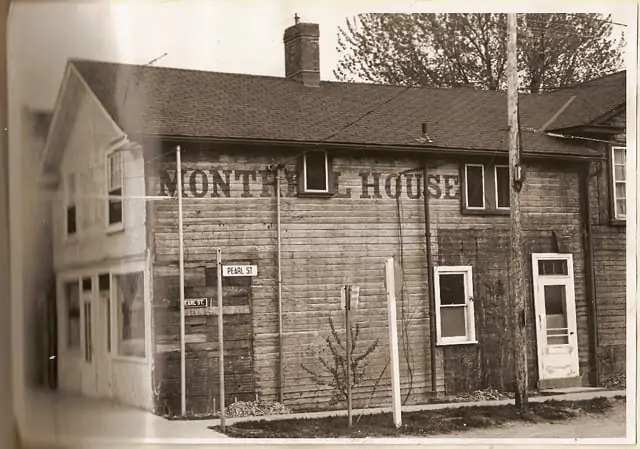
Mississauga has some incredible historic buildings, and some of them go back over 200 years.
Here’s a look at some incredible photos and the stories behind five historical buildings in Mississauga.
Built c1817
680 Silver Creek Boulevard
What it is today: Restaurant
The Cherry Hill House is one of the oldest surviving buildings in Mississauga, built between 1817 and 1822, having been moved from the northwest intersection of Cawthra Road and Dundas Road East. The two-storey Georgian structure with its large Regency-styled veranda was originally situated on a small hill overlooking Joseph and Jane Silverthorn’s 200-acre farm. The laneway to the house was lined with cherry trees, transplanted from New Jersey when the Silverthorn’s settled here in 1807. The Silverthorns had three sons and nine daughters. Joseph and Jane died within months of each other in 1879 and 1880, after 75 years of marriage, and the house was inherited by their three unmarried daughters, Janet, Helen and Augusta. Augusta died in 1907 and left the house and its contents to her favourite great-nephew, William Stanislaus Romain. The house fell into disrepair, and served for a time as a boarding house. While still on what was once part of the Silverthorn farm, the house was moved to its present location in 1973 to make way for the widening of Cawthra Road. In 1979 it turned into a restaurant.
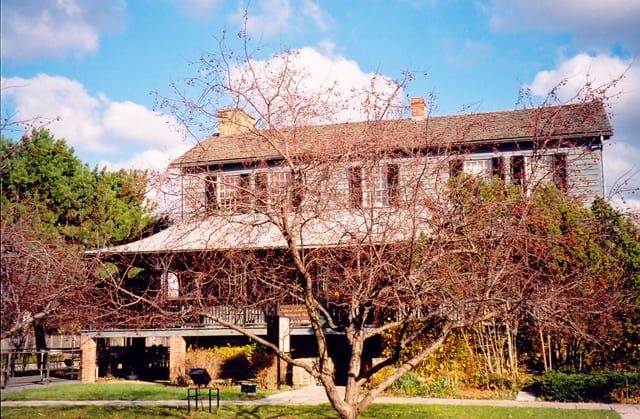
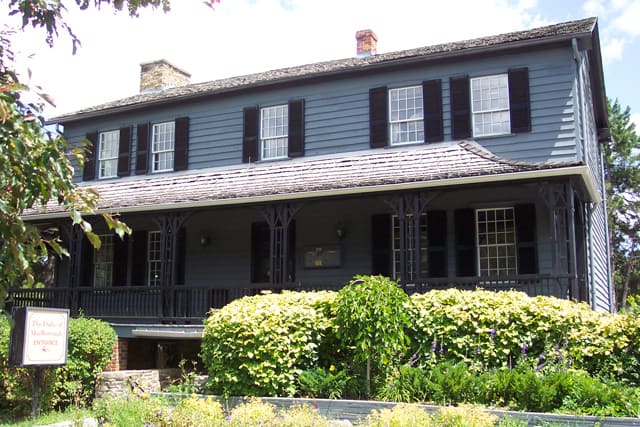
Built c1821
210 Queen Street South
What it is today: Ice Cream shop and a Greek Restaurant
John Barnhart’s “Montreal House” is the oldest surviving structure in Streetsville and the oldest commercial building in Mississauga. Originally built in 1821, it was home to Barnhart’s trading post and general store. Barnhart’s son, Jabez, started a newspaper upstairs in 1843, which became the Streetsville Review when Solomon J. Barnhart, Jabez’s brother, took over publication in 1846. The first telephone exchange in Streetsville operated in the southern extension of this building. Little altered, the building continues to serve commercial purposes today.
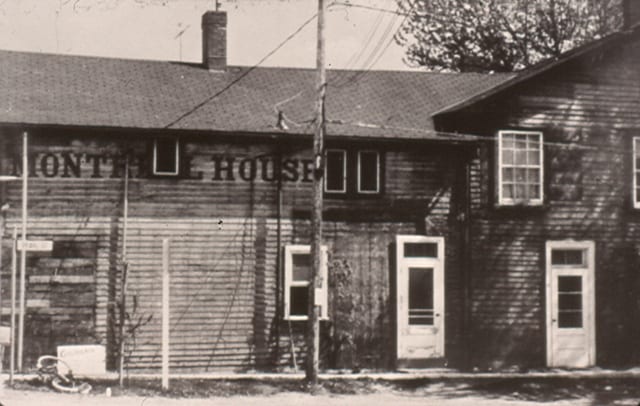
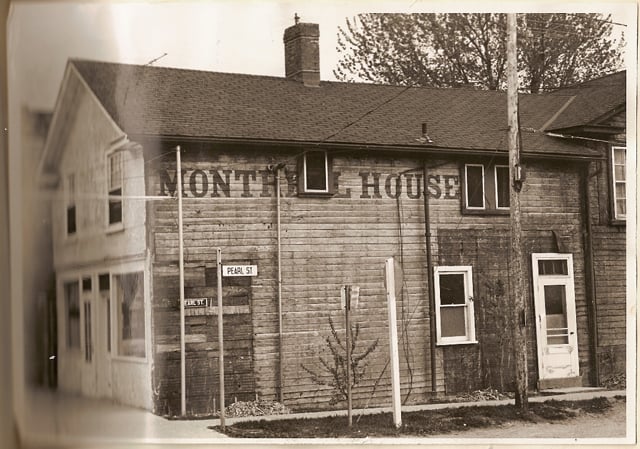
Built c1826
4415 Mississauga Road
What it is today: Museum
The Leslie Log House was built by John Leslie, who arrived in historic Mississauga from Scotland in 1824. His son, John Leslie Jr. was a builder and is credited with being the architect of the Barber House in Streetsville, the Hammond House in Erindale, and Benares in Clarkson. While most early log homes were gradually replaced by larger dwellings, the Leslie Log House remained in use as a family home for most of its history. In May of 1994 the house was relocated from its original location north of Streetsville to where it currently stands today on Mississauga Road. The Leslie Log House is owned today by City of Mississauga and is home to the Streetsville Historical Society and Archives.
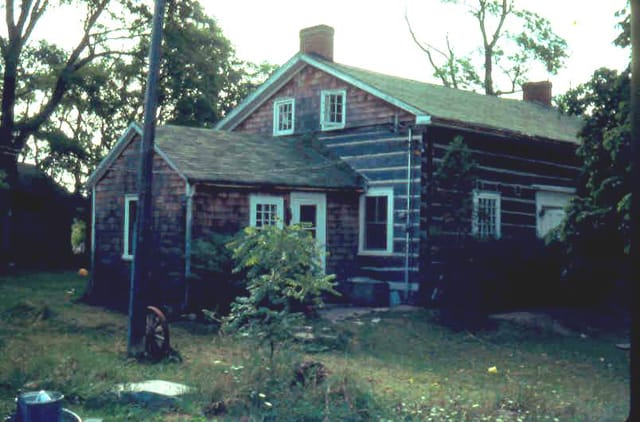
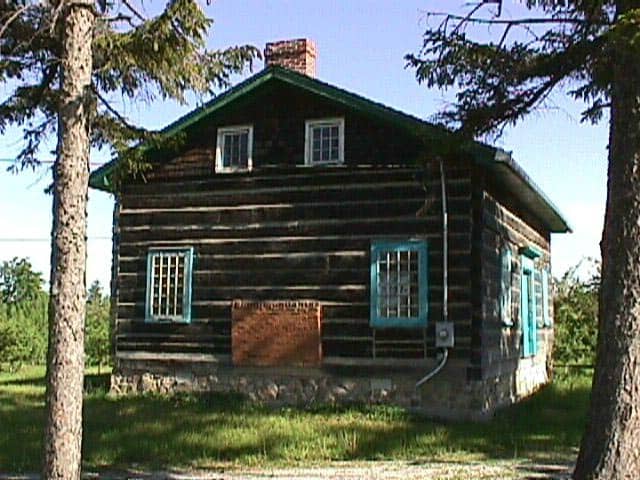
The Grange (Robinson-Adamson House)
Built c1828
1921 Dundas Street West
What it is today: Heritage Mississauga
The Grange, also known at the Robinson-Adamson House after its first and last private owners, was built around 1828 for Sir John Beverley Robinson, the first Chief Justice of Upper Canada. It is believed that the house served as a summer retreat, hunting lodge, and early administrative office for Robinson, who had been appointed Executor of Indian Land Sales in Toronto Township. Over the years the house has served as a family residence for Colonel William Thompson, Doctor Beaumont Dixie, Weymouth Schreiber and Harry Adamson, amongst many others. The building was donated to the City of Mississauga in 1978, and today is home to Heritage Mississauga.
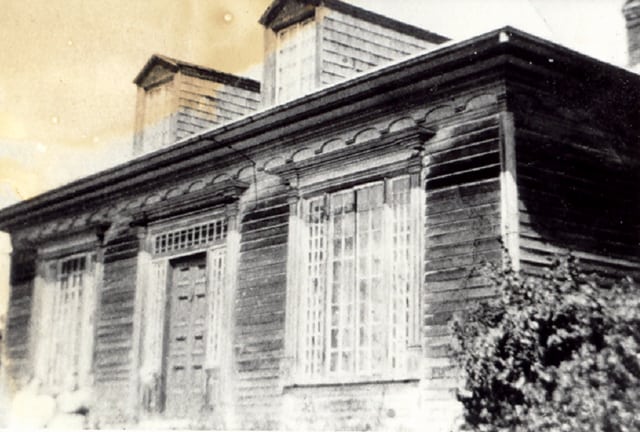
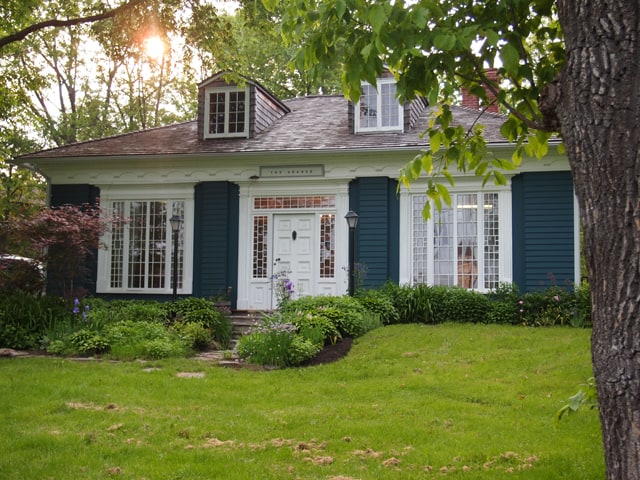
Bradley House (Museums of Mississauga)
Built c1830
1620 Orr Road
What it is today: Musuem
Bradley House is believed to be the only surviving residence of the original families of Merigold’s Point (Clarkson). Lewis Bradley, a United Empire Loyalist, received a Crown land grant in 1810 and constructed a log cabin. He and his wife Elizabeth (nee Merigold) constructed this one-and-a-half storey saltbox-style farmhouse about 1830. The house has been restored and furnished to reflect daily life in that era, and has been open as a public museum since 1967. Although moved from its original location close to the lake, the building still stands on part of the original 200 acre Bradley farm. The Bradley House museum is part of the Museums of Mississauga.
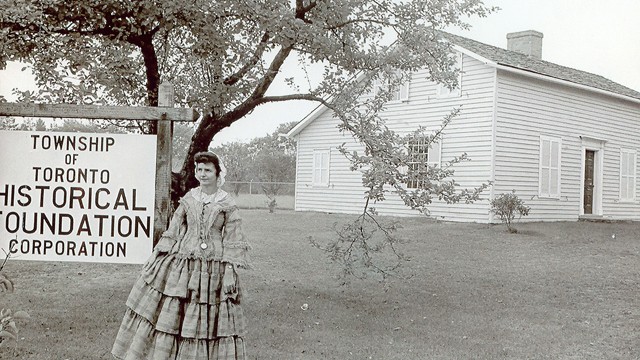
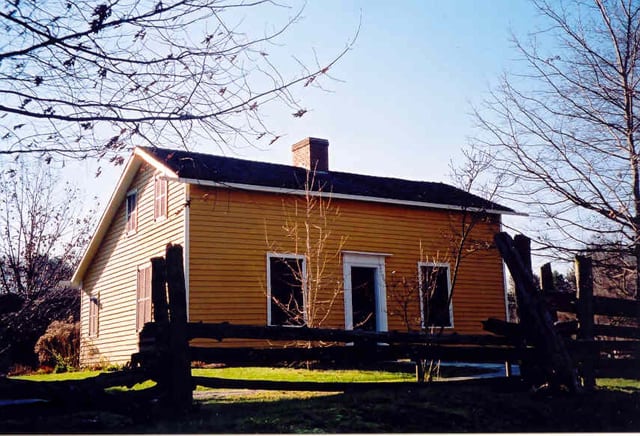
Photos and descriptions courtesy of Heritage Mississauga
INsauga's Editorial Standards and Policies
